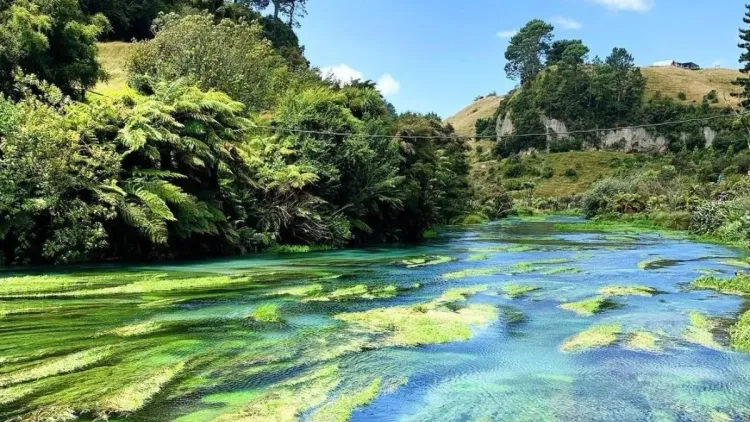Are New Zealand's Alpine Ecosystems at Risk Due to Rapid Weed Spread?

Synopsis
Key Takeaways
- New Zealand's alpine springs are facing severe threats from invasive aquatic weeds.
- Species like monkey musk and watercress are spreading rapidly.
- Climate change and human activities are exacerbating the issue.
- Coordinated action is vital to protect these ecosystems.
- The government is increasing funding to tackle invasive species.
Wellington, June 23 (NationPress) New Zealand's alpine springs, historically celebrated for their pristine waters and diverse ecosystems, are increasingly endangered due to the swift proliferation of lowland aquatic weeds.
Researchers from the University of Canterbury (UC) have observed the rapid encroachment of invasive species such as monkey musk and watercress into high-country waterways, including secluded springs in the upper Waimakariri region of the South Island, as reported in a UC announcement on Monday.
The research team analyzed UC data dating back to 2004, revealing that invasive weeds have swiftly moved into remote areas, establishing themselves in previously unspoiled habitats, leading to a noticeable decline in invertebrate diversity, according to the release.
Although nutrient enrichment has been dismissed as a cause, researchers are looking into variables such as rising temperatures, grazing by introduced animals, and the dispersal of seeds by humans and wildlife, as highlighted by the Xinhua news agency.
These results resonate with broader apprehensions that climate change and increased human activity are hastening the movement of invasive plants into elevated terrains, thereby jeopardizing unique alpine ecosystems, the researchers noted.
"While the springs serve as biodiversity hotspots and sanctuaries for native species, characterized by cold, clear waters and abundant invertebrate life, this situation is swiftly deteriorating," mentioned Helen Warburton from UC's School of Biological Sciences.
Although weed management initiatives are in progress, scientists caution that immediate and coordinated action is essential, as climate change and tourism pose further threats to these alpine biodiversity sanctuaries.
The New Zealand government is enhancing its efforts to curb the spread of invasive wilding pines, increasing funding by 20 percent, raising total investment to 12 million NZ dollars for the upcoming year.
Agriculture and Forestry Minister Todd McClay recently stated that wilding pines represent a significant threat to the nation's rural economy and landscapes.
"Wilding pines impose substantial costs on rural communities and often create challenges for farmers. It is our duty to collaborate with them to manage their spread and alleviate on-farm pressures," McClay remarked.
Currently, over 2 million hectares of land across New Zealand are affected, with infestations expanding at an annual rate of approximately five percent. If not addressed, the economic repercussions are projected to reach 3.6 billion NZ dollars over the next 50 years, as per government statistics.
Biosecurity Minister Andrew Hoggard emphasized the environmental dangers, pointing out that wilding pines damage native ecosystems, deplete water resources, and heighten the risk of wildfires.









